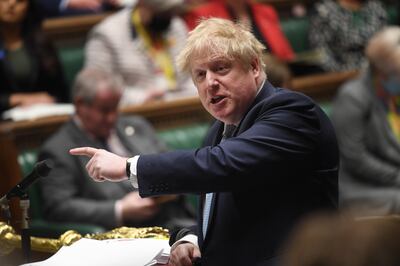The Ukrainian government has suggested that it needs more developed countries in the West to guarantee Ukraine's security in the future. But a new concept has gained traction this week, coming from UK Prime Minister Boris Johnson, who said countries such as Britain could offer threatened allies the promise of deterrence by denial. In other words, they could strengthen Ukraine's own defences enough that the prospect of invading it again would seem, for Russia, unappealing. Rather than western countries defending Ukraine, they could fortify it to the point where it would, in Mr Johnson's words, be "indigestable".
Is that good enough? In ceasefire talks with Russia, the issue of Ukraine’s neutrality is one of Moscow’s bottom-line demands.
It is not easy to square Ukraine’s desire for other countries to give it the assurances it needs with the constrained circumstances of a post-conflict relationship with Russia. You don’t have to be D’artagnan to understand the meaning of "an attack on one is an attack on all". This is what translates as the Nato mutual defence undertaking that all its members would respond militarily in the event one of their number suffered an encroachment. As US President Joe Biden puts it, not "one inch" of the Nato footprint could be lost. But this is something clearly not on offer to Ukraine.
But no less a figure than General Sir Nick Parker, a former British land forces commander, said last week that Nato had been defeated in a 30-year perspective. The alliance had not been able to deter a Russian assault on Ukraine, something that its policies were surely designed to deliver, at least indirectly.
The task for Nato now, according to Gen Parker is to defend its 2004 expansion, meaning the Baltic states, plus countries such as Romania and Poland. There are many within Nato who pushed back against Gen Parker’s suggestion.
To examine Mr Johnson’s suggestion of deterrence by denial in Gen Parker’s light would however mean taking a different approach to that of Nato alliance. Two implications of Mr Johnson’s thoughts are clear, certainly in light of the Ukraine situation. Gen Parker said there was a need for smaller coalitions of nations to come together. These arrangements would reduce the need for a large gathering of countries to find a common path from a host of different views and risk appetites.
There is already a caucus of the Joint Expeditionary Force (JEF) countries that Mr Johnson hosted for a summit in London last month. The UK agrees within this framework to lead expeditionary military operations with contributions as necessary from Denmark, Estonia, Finland, Latvia, Lithuania, the Netherlands, Norway and Sweden.

JEF has had a low profile because Nato has been forward-leaning in reinforcing the eastern countries. But as of last week, it had 40,000 troops under its command on the frontier and its members had agreed to four new multi-national battlegroups in arena.
A dispute over the attempts by Poland to offer legacy MiG fighter planes to Ukraine immediately after the Russian invasion shows the limits of a defensive alliance. The biggest countries were openly fretful about climbing on an escalatory ladder with Russia. As both sides possess nuclear weapons, the obvious issue is that ladder would take the conflict into that realm.
As another British commander observed last week, the five weeks since the outbreak of the Ukraine war has brought a “much sharper point” to the nuclear element of defence in Europe. The second, more obvious interpretation of deterrence by denial is ensuring that country under threat has a pipeline of arms supplies to defend itself.
That is to conceptualise an undertaking that ensures an ally can equip its own troops, can maintain its supply lines and has the means to ensure the attacker cannot establish air superiority or ballistic dominance with, for example, cruise missiles from afar.
It also means maintaining the electrical and electronic domain in the face of cyber or other assault. In this scenario, at the very least, the weapons factories of the benefactor countries are running hot to replenish the stocks of the country acting in self-defence.
This entails having the domestic resilience to ensure these arms can be produced and then delivered. There are careful judgements to be made. If the system is too sophisticated, the need for training may be impracticable. But such thinking needs to be tested. What used to be delivered by trainers can potentially be done on Zoom as long as communications are in tact.
Then there is the shifting terrain of the battle. Are drawdowns or territorial realignments by the aggressor an opportunity to send in new or different weapons? For example, does a lull give an opportunity to send train loads of heavy artillery weapons that had not gone in before?
It was reported last week that the UK was considering sending the AS-90 Vickers artillery system, and Germany had consented to the Czechs sending the PbV-501 infantry fighting vehicle to Ukraine.
With such webs of supplies the idea is that an aggressor can indeed be denied their takeover ambitions and thus deterrence is achieved in an indirect way.
Whether that is superior or inferior to a formal defensive alliance like Nato is something to grapple with in the months and years ahead.





